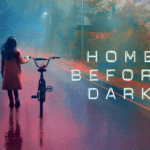‘Good Omens’ weaves a tapestry of rich themes and philosophical inquiries that make it a standout series. Central to its narrative is the perpetual struggle between good and evil, embodied by the celestial beings Aziraphale, the angel, and Crowley, the demon. Their unique friendship blurs the traditionally rigid boundaries of morality, suggesting that goodness and malevolence often overlap in the spectrum of human and supernatural behavior. Through their interactions, the show questions whether actions are inherently good or evil, or whether they are shaped by circumstances and perspective.
The show also delves into the age-old debate of fate versus free will. As celestial representatives, Aziraphale and Crowley grapple with prophecies forecasting the apocalypse, challenging whether destinies are predestined or can be shaped by individual choices. This battle between destiny and agency adds depth to the storyline, showcasing the characters’ internal conflicts and growth.
Moreover, ‘Good Omens’ explores the notion of friendship and loyalty against the backdrop of an impending apocalypse. Aziraphale and Crowley’s relationship transcends their celestial duties, evolving into a profound bond marked by mutual respect and affection. This unlikely friendship highlights the idea that connections formed out of genuine understanding and loyalty can transcend societal and even supernatural boundaries.
The creators of ‘Good Omens’ skillfully incorporate satirical and humorous elements to address these serious themes, providing a lighthearted yet thought-provoking viewing experience. The show’s whimsical tone, underscored by witty dialogue and absurd situations, allows it to tackle existential questions without the weightiness that often accompanies such discussions. Thus, ‘Good Omens’ not only entertains but also invites viewers to reflect on deeper moral and philosophical questions, making it a unique and engaging series.


Seasons Overview and Key Plot Points
‘Good Omens,’ a television adaptation of Neil Gaiman and Terry Pratchett’s beloved novel, unfolds across multiple seasons, each rich in thematic depth and narrative complexity. Central to Season 1 is the unexpected alliance between Aziraphale, an angel, and Crowley, a demon. Despite being on opposite sides of the celestial spectrum, their millennia-old companionship drives the compelling storyline of thwarting Armageddon.
In the inaugural season, the narrative kickstarts with the birth of the Antichrist, an event destined to trigger the apocalypse. However, a comedic twist of fate leads to a mix-up, dispersing the child to a quaint English village, far removed from the eyes of heaven and hell. This anomaly sets Aziraphale and Crowley on an urgent quest to locate the boy before the world descends into chaos. Their efforts are contrasted by the scheming Four Horsemen of the Apocalypse—War, Famine, Pollution (replacing Pestilence), and Death—who symbolize the impending doom.
Season 1 intricately weaves through various supernatural beings, highlighting the far-reaching influences of celestial and infernal realms. The celestial dynamics, particularly the Bureaucratic Heaven and Hell’s chaotic nature, add layers to the storyline, infusing both humor and poignancy. As the stakes heighten, the narrative explores profound themes like destiny, friendship, and the blurred lines between good and evil.
The series’ subsequent seasons expand upon these foundational themes, delving deeper into the characters’ backstories and new apocalyptic omens. Introducing fresh characters and plot arcs ensures the continuity of the show’s enchanting allure while sustaining a blend of wit and gravitas. The intricate dance of opposing forces—between the heavenly and the hellish—continues to be a cornerstone, keeping audiences enraptured and eager for more.




Star-Studded Cast and Character Performances
The star-studded cast of ‘Good Omens’ plays a critical role in bringing the narrative to life, with standout performances that resonate deeply with both fans of the original novel and new audiences. David Tennant and Michael Sheen lead the ensemble with their exceptional portrayals of Crowley and Aziraphale, respectively. Tennant’s Crowley, a demon with a sardonic wit and a surprising capacity for good, meshes seamlessly with Sheen’s Aziraphale, an angel who is fussy yet kind-hearted. The chemistry between Tennant and Sheen is palpable, creating a dynamic duo whose intricate relationship forms the backbone of the series.
Jon Hamm brings a unique flair to the role of Gabriel, elevating the character from the novel’s pages with his commanding presence and sharp delivery. His interpretation of the archangel adds an unmistakable layer of both authority and humor, making Gabriel a memorable figure in the celestial hierarchy.
Frances McDormand’s contribution as the voice of God is nothing short of remarkable. Her calm and almost serene narration juxtaposes the often chaotic events unfolding on screen, providing a soothing yet authoritative commentary that underscores the series’ divine elements.
Another notable performance comes from Adria Arjona as Anathema Device, a witch whose determination and intelligence drive much of the plot forward. Arjona captures Anathema’s complexity and resourcefulness superbly, ensuring that the character remains a pivotal part of the story.
The casting choices in ‘Good Omens’ not only align perfectly with the characters envisioned by Neil Gaiman and Terry Pratchett in their original novel but also enhance the narrative depth through nuanced performances. Each actor encapsulates the essence of their respective character while contributing to the overall success of the series. The seamless embodiment of these literary figures by the cast is a testament to the thoughtful casting and the actors’ dedication to their roles.


Production Quality and Visual Storytelling
The production quality of ‘Good Omens’ stands as a testament to meticulous craftsmanship and visionary storytelling. Under the astute direction of Douglas Mackinnon, the series seamlessly blends the fantastical with the emotive, creating a captivating juxtaposition that draws viewers into its unique world. The cinematography, helmed by Gavin Finney, DSS, enhances this merger, with each shot meticulously framed to accentuate the show’s dual tones of whimsy and gravitas. Specialized camera techniques and evocative lighting arrangements amplify the narrative’s supernatural elements, making the surreal appear palpably real.
A notable aspect of ‘Good Omens’ is the innovative work of the special effects team. Their ability to produce seamless visual effects brings to life an otherworldly and immersive experience. Scenes involving angelic manifestations or demonic chaos are executed with a level of detail that never detracts from but rather enriches the narrative. The special effects team envisions and realizes a reality where the extraordinary feels grounded and believable without overshadowing the emotional arcs of the characters.
Complementing the visual elements is the exceptional costume design by Claire Anderson. Her work impeccably captures each character’s essence, blending period elements with contemporary styles to reinforce their timeless existence. Whether it is Aziraphale’s vintage elegance or Crowley’s edgy modernity, the costumes serve as silent narrators, offering deeper insight into each character’s persona and background.
Adding another dimension to the storytelling is the musical score composed by David Arnold. The score masterfully weaves through the narrative, punctuating emotional beats and heightening dramatic moments. Its harmonious blend of classical and modern motifs not only enhances the atmosphere but also serves to bind the visual and emotional facets of the show together, creating a holistic viewing experience.
Overall, ‘Good Omens’ exemplifies the synergy between various elements of production to create a visually stunning and emotionally resonant series. From direction and cinematography to special effects, costume design, and musical scoring, every aspect works in concert to bring Neil Gaiman and Terry Pratchett’s vision of the supernatural world to vibrant, palpable life.









